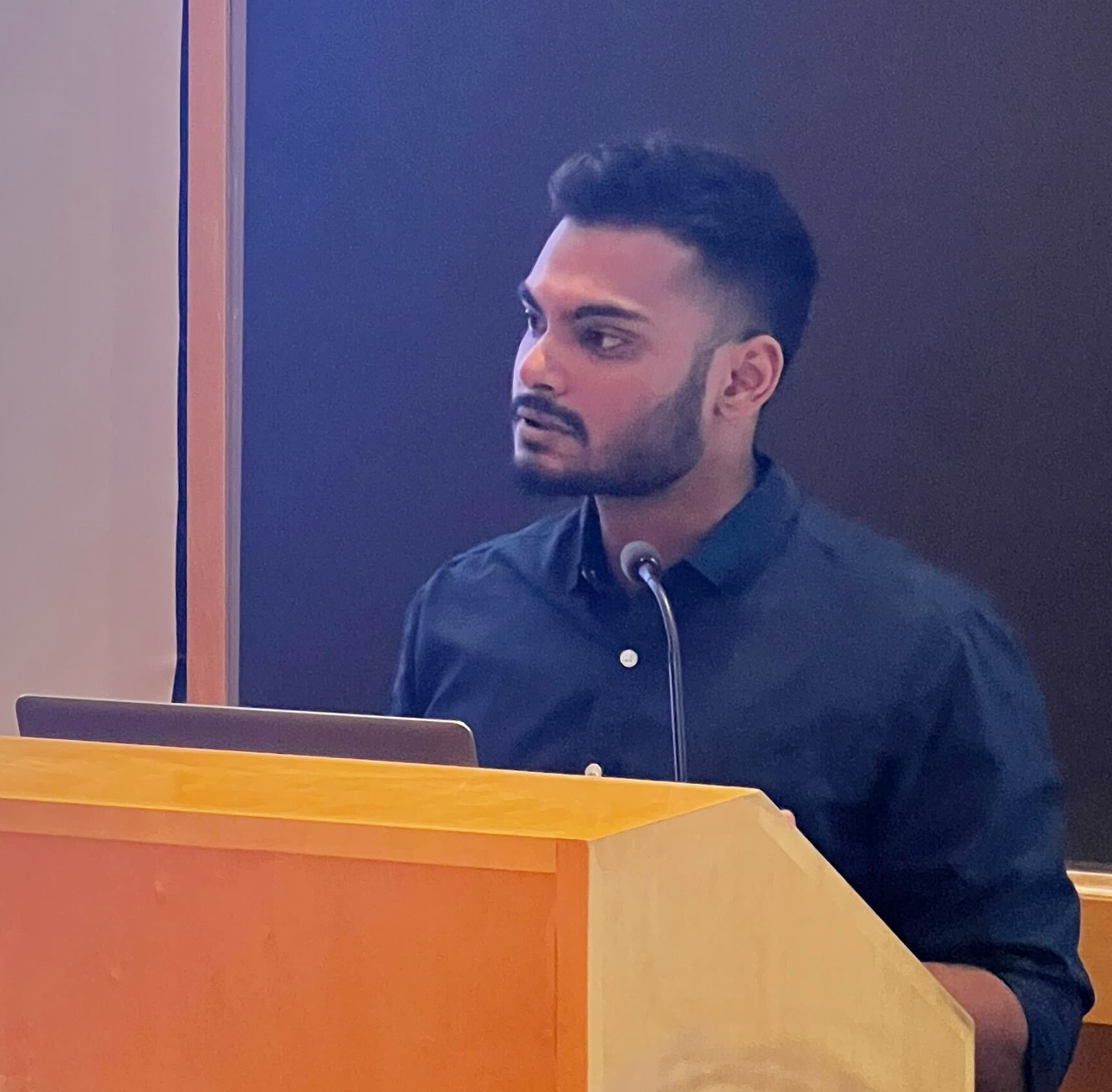News
December 2025 (Paper):
My preprint titled "Modeling the effect of MHD activity on runaway electron generation during disruptions” is now avaliable. [link]
November 2025 (Conference):
I gave a talk on the coupling between MHD activity and runaway electrons during disruptions in SPARC at APS DPP, Long Beach.
October 2025 (News):
My work on magnetized shocks was featured on the ZNetUS website. [link]
October 2025 (Paper):
My paper on how radiative cooling and magnetic diffusion affect shocks is now available in Physics of Plasmas. [link]
July 2025 (Paper):
My paper on 2D self-consistent modeling of runaway electrons and MHD physics is now available in Physics of Plasmas. [link]
July 2025 (Talk):
I presented a talk at the Theory and Disruptions Workshop in Princeton, NJ.
June 2025 (Talk):
A gave a talk at the Joint Runaway Electron Meeting, descibing how 3D MHD instabilities couple with REs in high-current devices like SPARC.
April 2025 (Paper):
A preprint of my latest paper describing coupled runaway electron and MHD modeling of SPARC disruptions is now available. [link]
December 2024 (Paper):
A preprint of our paper demonstrating evidence for quadrupolar density generated by two-fluid effects in guide field reconnection is now available. [link]
October 2024 (Talk):
I presented a talk on shock mediated flux pileup and radiative cooling in magnetic reconnection at the APS Division of Plasma Physics '24 Meeting in Atlanta, GA. [link]
July 2024 (Thesis):
I defended my thesis titled "Radiatively Cooled Magnetic Reconnection Experiments Driven by Pulsed Power" successfully, and was awarded a Ph.D. in Mechanical Engineering from MIT.
July 2024 (News): My work was featured on the MIT Plasma Science and Fusion Center News. [link]
June 2024 (Award):
I was awarded the IEEE Igor Alexeff Outstanding Student in Plasma Science Award.
[link]
May 2024 (News):
My work was featured as an AIP (American Institute of Physics) Science Highlight (Scilight).
[link]
May 2024 (Paper):
My paper on the experimental details of radiatively cooled magnetic reconnection on Z now published as Editor's Pick in Physics of Plasmas.
[link]
April 2024 (News):
My work on radiatively cooled magnetic reconnection was featured as a Research Highlight in Nature Astronomy.
[link]
April 2024 (Paper):
My paper radiative cooling in magnetic reconnection was highlighted in Physical Review Letters as an Editors' Suggestion. "Only about one Letter in six is highlighted as a Suggestion
due to its particular importance, innovation, and broad appeal."
[paper]
[arxiv]
Feb 2024 (Paper): Paper on spectroscopy analysis using machine learning published in IEEE T. Plasma Science.
[paper]
[arxiv]
Feb 2024 (Paper)
Preprint on radiatively-cooled magnetic reconnection experiments on the Z machine (submitted as an invited paper to Phys. Plasmas) now available.
[paper]
Jan 2024 (Paper)
Preprint of our paper on radiatively-cooled magnetic reconnection (submitted to Phys. Rev. Lett.) now available.
[paper]
Jan 2024 (Paper): Preprint of our computational paper on radiatively-cooled magnetic reconnection (submitted to J. Plasma Phys.) now available.
[paper]
Dec 2024 (Award): My proposal to characterize adiabatic index in magnetized HED plasmas was funded through the ZNetUS program.
The adiabatic index is important for shock compression in inertial confinement fusion.
Nov 2023 (Talk): Invited talk on radiatively-cooled magnetic reconnection at APS Division of Plasma Physics Meeting, Denver, CO. [video]
Sep 2023 (Paper): Preprint of paper on spectroscopy analysis using machine learning (submitted to IEEE T. Plasma Science) now available.
[paper]
Sep 2023 (Paper): Paper on pulsed-power-driven planar wire arrays was published in Phys. Plasmas.
[paper]
Aug 2023 (Talk): Plenary talk on magnetic reconnection experimental results at the Z Fundamental Science Workshop.
Jul 2023 (Talk): Contributed talk at the Dense Z Pinch conference (DZP), Ann Arbor, MI.
Jun 2023 (Talk): Contributed talk at the International Magnetic Reconnection Workshop, Japan.
May 2023 (Award): Awarded the 2023 College of Engineering Exponent Fellowship.
May 2023 (Award): Awarded the 2023 Wunsch Foundation Silent Hoist and Crane Outstanding Student Award.
May 2023 (Award): Awarded Runner-up for best student paper at International Conference of Plasma Science (ICOPS), Santa Fe, NM.
Apr 2023 (News): My research on laboratory astrophysics featured on MIT news.
[article]
Dec 2022 (Award): Awarded Best Poster at the MIT AI and ML in Engineering Expo.
Nov 2022 (Paper): Paper on magnetized bow shocks published in J. Plasma Phys.
[paper]
Oct 2022 (Paper): Paper on velocity and Mach no. measurements from bow shocks published in Rev. Sci. Instrum.
[paper]
Aug 2022 (Award): Awarded the MIT MathWorks fellowship.
Jan 2022 (Thesis): Masters thesis on HED magnetized plasma shocks now available.
[thesis]
Sep 2021 (Award): Awarded the Keck Award in Thermal Sciences.
Aug 2021 (Award): Awarded the MIT GSC Conference Grant.




